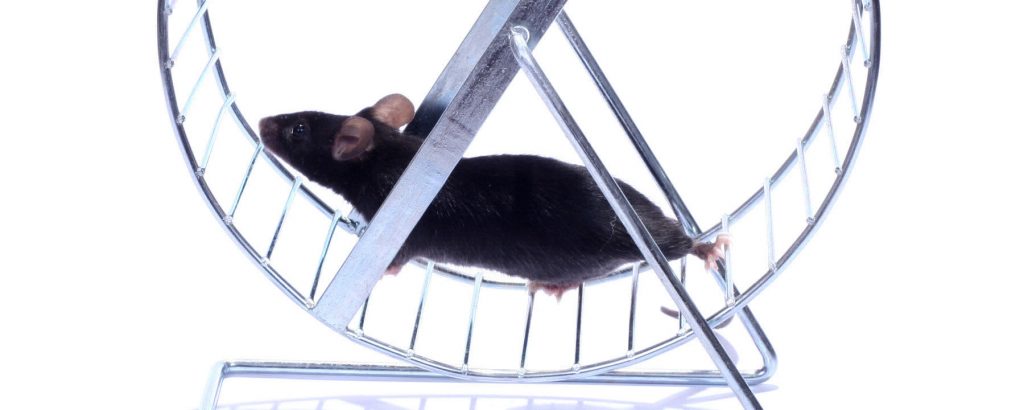Every man, woman, and mouse partakes in a different amount of voluntary physical activity. Some willingly run miles a day with no destination in mind, while others walk only when they need to get somewhere. Differences in how much physical activity mice choose to engage in is influenced by epigenetic changes in early development, according to a study published in Nature Communications on December 2.
“The study clearly shows that voluntary exercise behavior is sensitive to epigenetic influences, which is significant because, as the authors point out, it implies that there is a critical period in childhood where a ‘set point’ for exercise behavior is established,” Bluma Lesch, an epigenetics researcher at Yale University who was not involved in the study, tells The Scientist in an email. “It raises the key question: Can altering epigenetic marks later in life alter the behavioral phenotype?”
In work leading up to the current study, Robert Waterland, who researches epigenetics at Baylor College of Medicine, and his team had been studying energy balance—the proportion of calories an animal regularly consumes compared to the amount it regularly burns—in early development. In order to test how epigenetics might influence this balance, the team focused on a particular subtype of neurons in the hypothalamus known as AgRP neurons that have long been considered to regulate the amount of food an animal eats, thus managing its energy balance and over time, its likelihood of experiencing obesity.
To test the effects of DNA methylation in the AgRP neurons, the researchers knocked out the expression of Dnmt3a, a gene that controls DNA methylation in the AgRP neurons in suckling mice. The scientists expected that disrupting the DNA methylation on these neurons would cause the knockout mice to eat more and pack on more body fat than the wildtype mice. But this wasn’t the case—the knockout mice were only slightly heavier than the wildtype mice.
“If you look in textbooks about regulation of energy balance, they’ll talk about AgRP neurons and their classic role in regulating food intake,” says Waterland. “And yet we didn’t see that. We didn’t see that at all.”
So they tried again. This time, they knocked out the same gene the same way at the same point in development. They fed the mice the same diets. But now they gave the animals access to a running wheel for eight weeks. “That is where we saw the most profound difference,” says Waterland. “Compared to the wild type mice that run about six kilometers a night, these knockout mice only run about half that much.”
While all the mice lost some body fat after being given access to the wheels, the mice that ran more lost more than their more sedentary counterparts.
The team also noted some of the molecular changes they saw, such as an increase in expression of another gene, Bmp7, which, among other things, is involved in the formation of fatty tissue, in the knockout mice. “As is common in studies of epigenetics in vivo, the exact link between the epigenetic changes observed and the behavioral phenotype is somewhat fuzzy,” says Lesch. “The study shows that there are extensive epigenetic changes, extensive gene expression changes, and clear effects on behavior, but it’s not clear how exactly these three effects are related at the molecular level.”
Along with clarifying the mechanisms underlying the differences in activity levels, the obvious next step, according to Waterland, is to see what the results mean for humans. Much of the epigenetic regulation that occurs in the mouse hypothalamus is established during the so-called suckling period, the first 21 days after their birth. “And that’s the process we interfered with,” he says. But in humans, the timing may be different.
“The overall demonstration . . . is really compelling and raises a number of intriguing questions,” Richard Hunter, who studies neuroepigenetics at the University of Massachusetts and was not involved in the study, tells The Scientist in an email. “It is worth noting that the developmental time point [the scientists] are looking at overlaps exactly” with the development of neuronal connections in in the hypothalamus that influence motivation, suggesting it’s worth exploring a possible developmental connection between motivation and exercise.







